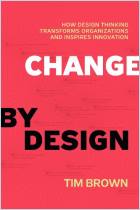Join getAbstract to access the summary!

Join getAbstract to access the summary!
Jeanne Liedtka and Tim Ogilvie
Designing for Growth
A Design Thinking Tool Kit for Managers
Columbia UP, 2011
What's inside?
This hands-on manual for corporate innovation says to combine the best of analytical thinking and creative design.
Recommendation
What happens if you put analytical thinkers on the same teams as creative designers? Actually, this combination of opposites can become much greater than the sum of its parts. For fast, cost-effective, replicable product innovation, designers need analytical thinkers as much as analysts need designers. Innovation experts Jeanne Liedtka and Tim Ogilvie set up four questions as the framework for implementing a systematic process for achieving innovative concepts. Their graphically interesting manual lays out steps and tools you can use to achieve great internal operating efficiencies, to generate true innovation or even to disrupt entire industries. The authors temper pure creativity with discipline, risk management and strict boundaries, while leaving open the possibility of breakthrough innovation. Their methods demystify the often opaque world of design in a way any analytics manager can grasp. getAbstract recommends this intelligent presentation to managers and leaders at all levels, and to designers who seek ways to apply their creativity in a results-oriented, structured manner.
Summary
About the Authors
Innovation and design expert Jeanne Liedtka served as Chief Learning Officer for United Technologies Corporation. Tim Ogilvie leads Peer Insight, an innovation strategy firm. He has worked on “service innovation” with governments worldwide.
















Comment on this summary